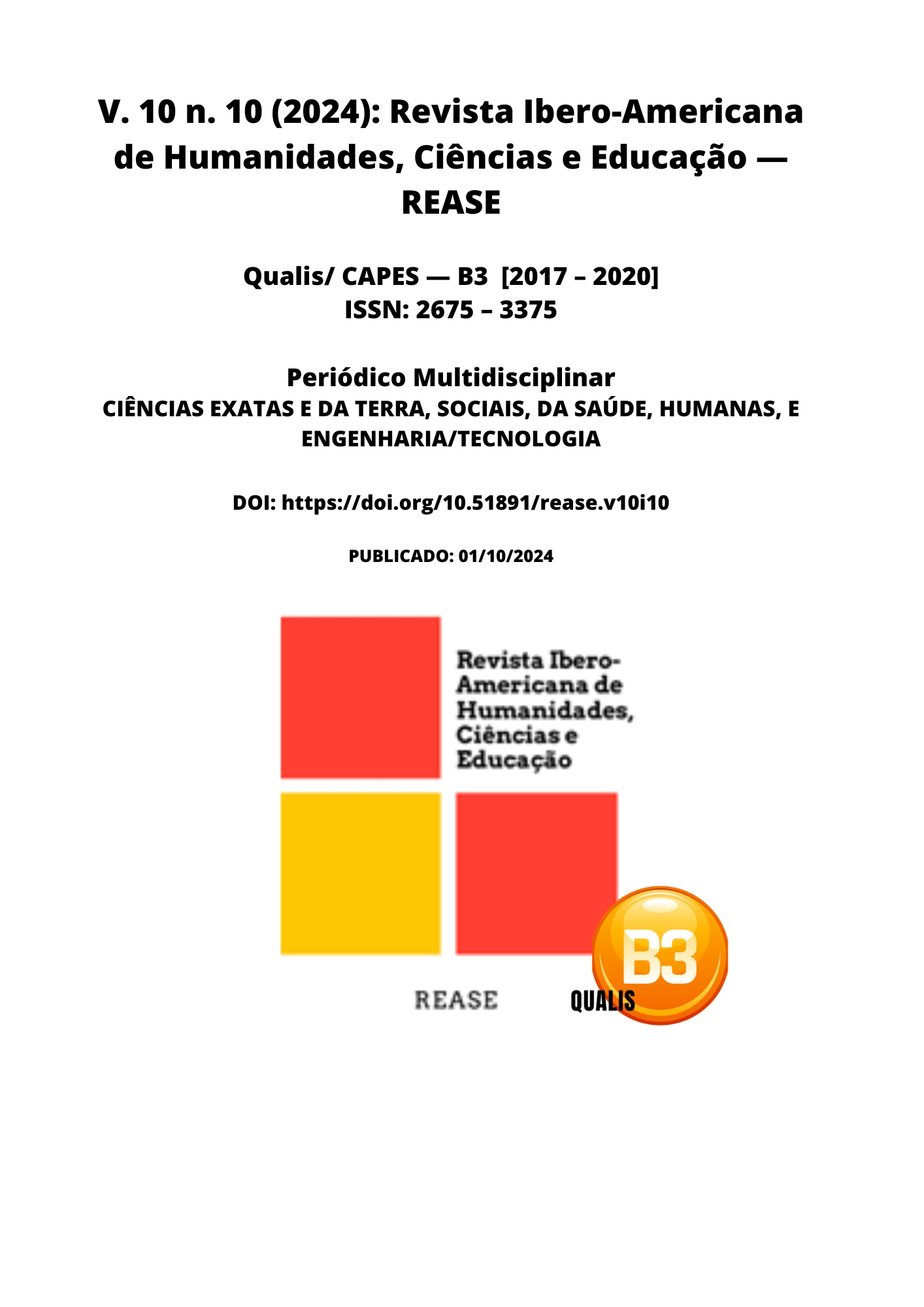NUTRITIONAL EVALUATION OF KIMBERLITE ROCK IN SOILS IN THE FORMIGA REGION, MG
DOI:
https://doi.org/10.51891/rease.v10i10.15675Keywords:
Crushed rock. Soil solution. Element availability. UV-VIS spectrophotometry.Abstract
Introduction: Brazilian soils require nutrient replacement with each replanting, and those in the Formiga region are no different, requiring inputs and correctives for better crop development. The price of inputs and fertilizers has increased significantly due to wars and economic policies, and one proposed solution to supply the lack of nutrients in the soil is the use of crushed rock material. Within this perspective, the effectiveness of kimberlite rock as a source of nutrients for agricultural soils in the Formiga region was studied. The study was carried out due to the growing demand for alternatives to fertilizers, whose cost has increased due to economic and geopolitical factors. Objective: The objective of this study was to evaluate the effectiveness of kimberlite rock in the release of essential nutrients, such as iron, phosphorus, potassium and copper, in two types of soils in the Formiga region, Minas Gerais. Material and Methods: The research sought to understand how different amounts of crushed kimberlite impact nutrient transfer over 90 days, considering variables such as soil type and microbial activity. To evaluate the effectiveness of kimberlite rock in releasing nutrients in agricultural soils, two types of soils typical of the Formiga-MG region were selected: Latosol and Cambisol. The soils were prepared in specific containers, where different amounts of crushed kimberlite were mixed with the soils. The experiment was conducted over 90 days, with regular monitoring to evaluate the release and transfer of nutrients from the rock to the soil. Samples were collected at specific time intervals for analysis of nutrient contents, considering factors such as microbial activity and variations in environmental conditions. Results: The results indicated that phosphorus release was more efficient in Latosol after 50 days of experiment, while in Cambisol there were oscillations, possibly due to microbial activity, and this aspect occurred in almost all situations studied. Conclusion: the study highlights that rockfilling using kimberlite is a promising technique for the remineralization of agricultural soils, especially in regions such as Formiga-MG. The effectiveness of the release of nutrients, such as phosphorus, potassium, copper and iron, was shown to be influenced by both the type of soil and microbial activity.
Downloads
Downloads
Published
How to Cite
Issue
Section
License
Atribuição CC BY

